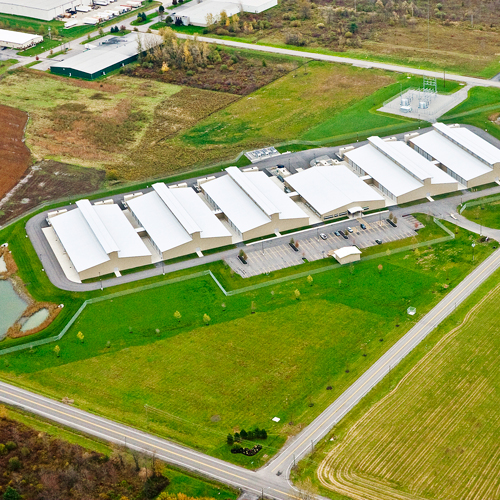Walk along the Glassboro, New Jersey, campus of Rowan University and you’ll notice a common theme: construction equipment and facility improvements are happening at every turn. According to Donald Moore, senior vice president of facilities planning and operations at Rowan University, the university’s growing enrollment and increasing range of academic offerings have resulted in the need for a variety of new construction and facility improvements.

“Over the next four to five years, we expect about $500 million worth of construction and project development to occur to accommodate the enrollment increases that are expected at the university,” Moore says. Specifically, Rowan University will construct a number of new facilities, including buildings for the colleges of business and engineering, new student housing, a health sciences facility, and academic buildings, to serve the entire university at both its main campus in Glassboro and its satellite campus in Camden.
Not only will these new and improved facilities meet the needs of the university’s plan to double enrollment to 25,000 by 2023; they will also generate a wealth of construction jobs and provide ample opportunities for higher education for the community at large. And, the university plans to increase its funded research—which totaled about $5 million in 2011 and nearly $30 million in 2014—so that it exceeds $100 million by 2023.

—Donald Moore, Senior Vice President of Facilities Planning and Operations
Moore points to a recent economic-impact study by Econsult Solutions of Philadelphia, which indicates that Rowan University has an annual economic impact of more than $1.2 billion in New Jersey, including the approximately 9,200 jobs it supports statewide and the $19 million it generates in state taxes.
“We have two medical schools under our portfolio, and we are building 1,400 beds’ worth of housing,” Moore says. In addition to being one of two institutions in the nation to offer both MD- and DO-granting programs, Rowan University boasts 63 bachelor’s degrees, 44 master’s degrees, two doctoral degrees, two professional degrees, and dozens of certificate programs.
Recently, the university began the first of two major main-campus construction projects: a $63 million new build for the William G. Rohrer College of Business and a $71 million new build for the Henry M. Rowan College of Engineering.
“Discussion also is under way as to how we expand our relationships with the county colleges of New Jersey,” Moore says. “Last year, we developed a relationship with Gloucester County College of Southern New Jersey, which is now called Rowan College at Gloucester County. That model is helping us expand.”

While Rowan University’s programs continue to expand—including its business program, which is expected to double its enrollment—the growth will not be without its challenges. “One primary challenge is coordinating the delivery of all construction and facilities upgrades,” Moore says. “But, more significantly, as the university grows and a contribution from the state either stays the same or decreases slightly, [that] challenges things financially. We have to seek creative ways to tackle that issue.”
Aside from the capital-improvement projects, Rowan University has also set its sights on creating sustainable, functional campus storm-water-management systems and landscapes. “We were just awarded the 2015 Society for College and University Planning award for our storm-water-management master plan that we developed,” Moore says. “It’s very unique because it deals with the growing campus and the integration of our growth as well as our sustainability focus. We have a body of water meandering through the center of our campus. We have wetlands and topographical changes that are pretty dramatic, so we are working hard to create functional landscapes, with open spaces, while also handling drainage issues.”


